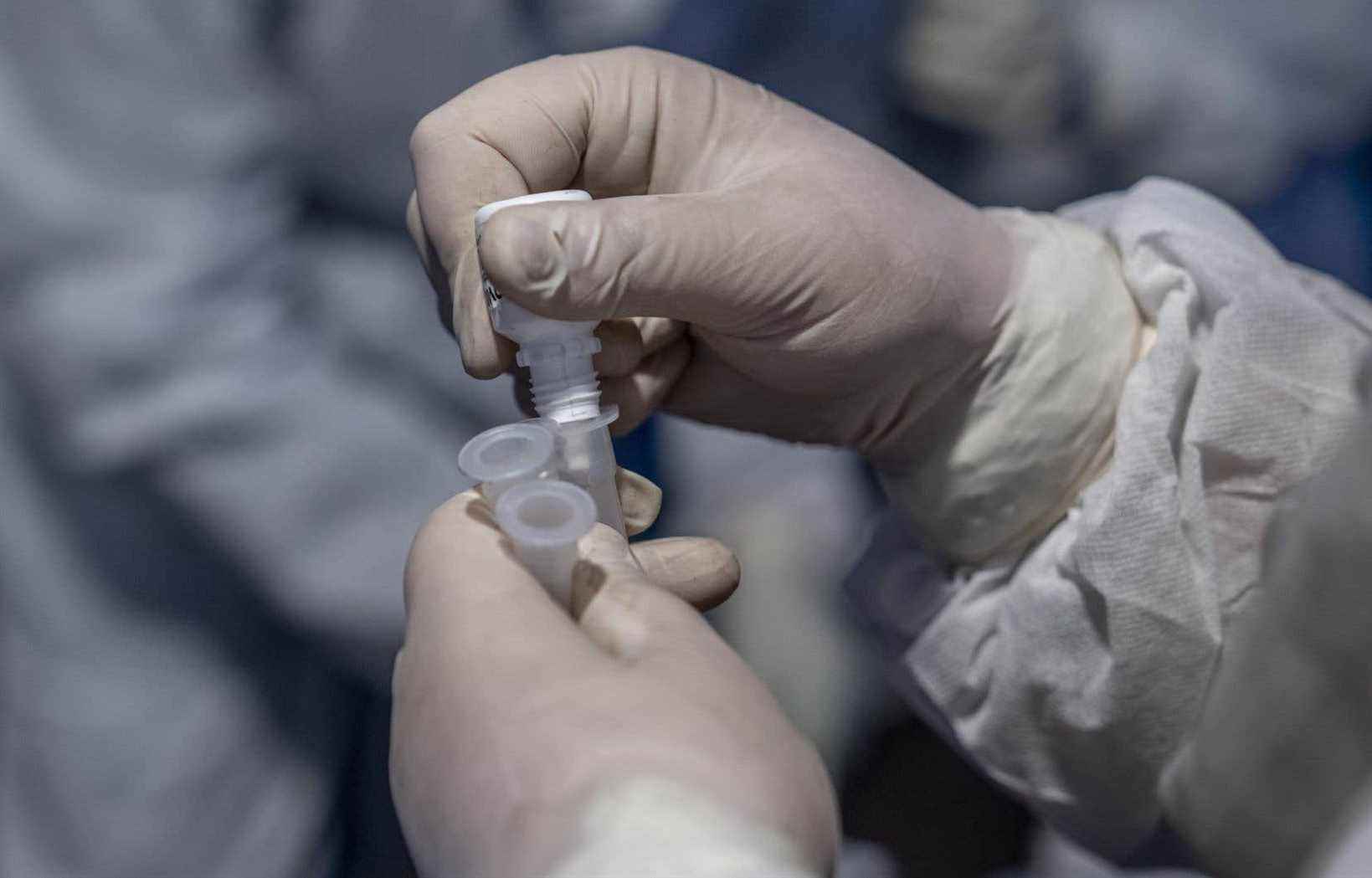A sub-variant of Omicron, which appeared a few weeks ago, is now being closely followed: if it seems close to the initial version, scientists want to know more about its characteristics and its possible consequences on the pandemic.
The name Omicron is in fact a “generic term” which designates without distinction several very similar virus lineages, explains the World Health Organization (WHO) on Friday in its last weekly update.
Among these sibling lineages monitored under the name of Omicron (with the qualification of “worrying variant”), it is the one designated by the name BA.1 which is almost hegemonic.
But certain data attract attention: BA.2, another of these lineages, would thus have become the majority in India or Denmark, where the number of daily cases has started to rise again for a few days.
“What surprised us was the speed with which this sub-variant, which circulated a lot in Asia, settled in Denmark,” epidemiologist Antoine Flahault told AFP.
“The country was expecting a peak in contamination in mid-January; it did not occur and perhaps it is due to this subvariant, which seems very transmissible but not more virulent” than the original variant, he continues.
For the moment, the health authorities are waiting to learn more.
“What interests us is whether (this sub-variant) has different characteristics (from BA.1) in terms of contagiousness, immune escape or severity,” the French public health agency noted on Friday. To date, BA.2 has been detected in France, “but at very low levels”.
In Denmark, on the other hand, it is gradually replacing BA.1, the “classic” Omicron variant, noted the French public health agency. “The Danish authorities have no explanation for this phenomenon but it is being closely monitored,” she added.
France for its part “closely follows the data which will be produced by Denmark”.
“Comparable severity”
Cautious, scientists do not seem alarmist.
For Antoine Flahault, it is still too early to worry, but “vigilance” is essential.
“For the moment, we have the impression that it is of a severity comparable to Omicron, but many questions are still on the table,” adds the director of the Institute of Global Health at the University of Geneva.
He invites us to “implement screening techniques to properly detect” BA.2 and “quickly see what its properties are”.
“Very early observations in India and Denmark suggest there is no major difference in severity from BA.1,” also tweeted Tom Peacock, a virologist at Imperial College London.
According to him, the mutations observed should not call into question the effectiveness of vaccines either.
“Even with a slightly higher transmissibility” than the classic version of Omicron, he absolutely does not expect a change equivalent to that which occurred when this last variant supplanted Delta.
“Personally, I don’t think BA.2 is going to have a substantial impact on the current wave of the pandemic,” he noted.
The French Minister of Health, Olivier Véran, also estimated Thursday that BA.2 does not “change the game” at this stage, while avoiding a final judgment.
“There are variations quite regularly,” he recalled during a press conference with Prime Minister Jean Castex. “For what we know so far, it more or less matches the characteristics we know of Omicron.”
